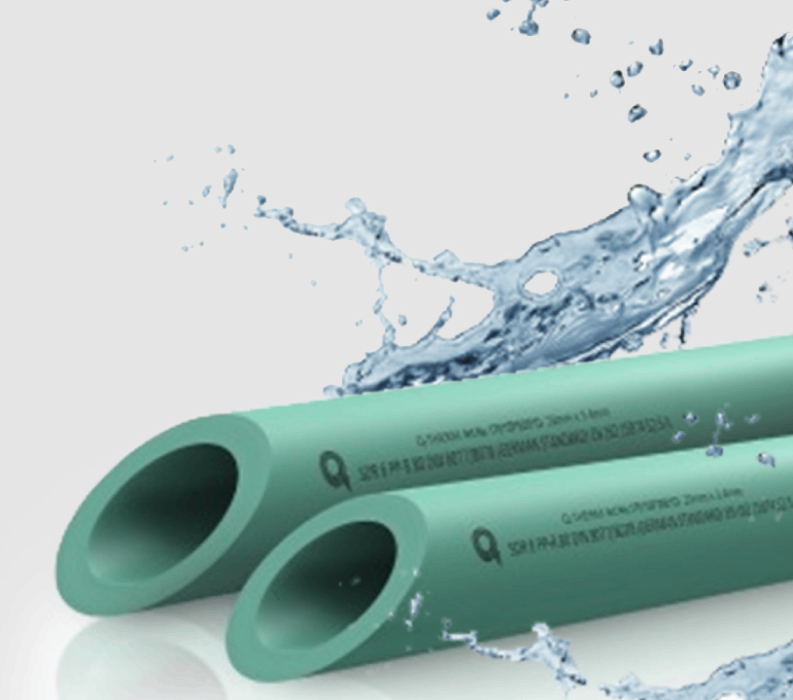Have you ever wondered why some water systems last for decades while others start leaking within a year? The secret lies not just in the quality of pipes but also in how they’re installed. PP-R (Polypropylene Random Copolymer) pipes are widely trusted for their durability, resistance to heat, and safety for drinking water. But here’s the catch—if they’re not installed correctly, even the best pipes from leading ppr fittings suppliers in UAE can fail prematurely.
Think of PP-R pipe installation like baking a cake: you can have the best ingredients, but if you mess up the oven temperature or skip a step, the cake collapses. In the same way, skipping small details during installation can compromise an entire piping system.
In this guide, we’ll walk you through the most common mistakes during PP-R pipe installation, the risks they pose, and how to avoid them to guarantee leak-proof performance for years.
PP-R pipes are designed to last for decades—resistant to high temperatures, corrosion, and scaling. They are ideal for plumbing, heating, and even industrial applications. But like any product, their performance depends on installation quality. When done right, they can serve reliably for 50 years or more.
Neglecting Pipe/Fitting End Cleaning
Risk: Dust, grease, or moisture left on the ends can trap air pockets and weaken the joint.
Solution: Always wipe pipe ends with a non-fibrous cloth before welding. Think of it as wiping a glass before pouring water—clean surfaces guarantee purity.
Incorrect Welding Device Temperature Setup
Risk: Low temperatures prevent proper fusion, while excessive heat damages the PP-R material.
Solution: Always set the welding machine to 260°C (498°F) and confirm with a calibrated thermometer. Skipping this step is like cooking pasta without checking if the water is boiling—you’ll get poor results.
Improper Welding Tool Arrangement
Risk: Loose or poorly arranged welding sockets cause uneven heating, leading to weak joints.
Solution: Securely attach sockets, with smaller sizes in front and larger at the back. Never let a socket extend beyond the welding plate.
Rushing Fusion Alignment
Risk: Misaligned joints create stress points that lead to leaks over time.
Solution: Insert the heated pipe smoothly into the fitting without twisting. Hold it firmly in place during the initial cooling stage. Patience here saves years of headaches later.
Ignoring Cooling Period
Risk: Handling the joint before it cools distorts the bond and causes leaks.
Solution: Let the joint cool naturally. Never splash water or use fans—it’s like shocking hot glass with cold water; cracks are inevitable.
Mixing Incompatible Materials
Risk: Welding PP-R directly to PVC, PE, or metal creates weak, leaky joints.
Solution: Use approved transition fittings for connecting PP-R to other materials. For example, brass adapters work well with metal.
Inadequate Safety Precautions
Risk: Welding involves 300°C heating elements, which can cause burns.
Solution: Always wear PPE—heat-resistant gloves, safety goggles, and proper footwear. Remember: safety first, installation second.
Post-Welding Device Mishandling
Risk: Skipping shutdown steps reduces the lifespan of your welding machine.
Solution: Turn off power, let the device cool naturally, clean residues with non-abrasive tools, and store it in a dust-free case.
Overlooking Proper Pipe Support and Clamping
Risk: Unsupported pipes sag, stress joints, and lead to leaks.
Solution: Use pipe clamps and supports as per manufacturer’s spacing guidelines. Think of it like a bridge—without support pillars, collapse is certain.
Skipping Pressure Testing
Risk: Without testing, hidden leaks remain unnoticed until after installation.
Solution: Conduct pressure tests at 1.5 times the maximum working pressure following DIN 1988 standards. This ensures long-term reliability.
How to Select Reliable PPR Fittings Suppliers in UAE
Not all suppliers are the same. Poor-quality fittings from unreliable vendors can undo all your careful installation efforts.
Checklist for choosing suppliers:
-
Look for suppliers with ISO-certified products
-
Ensure fittings comply with DIN and ISO standards
-
Ask for warranty and after-sales support
-
Check client reviews and references
Trusted ppr fittings suppliers in UAE like Quantum Industries provide PP-R systems with proven durability and manufacturer-backed guarantees.
Long-Term Maintenance Tips for Leak-Free Systems
-
Schedule regular inspections for visible signs of wear
-
Avoid sudden water hammer (pressure shocks)
-
Ensure expansion loops or joints are installed in long runs
-
Replace any damaged insulation around hot-water pipes
Real-Life Consequences of Poor Installation
Consider a hotel project where installers rushed the fusion process. Within a year, guests reported leaks in bathrooms. The hotel had to shut down 20 rooms for repair, costing thousands in lost revenue. A simple adherence to best practices could have prevented this disaster.
Conclusion
Installing PP-R pipes correctly is not rocket science—but it requires discipline and attention to detail. From cleaning pipe ends to allowing proper cooling, each step plays a critical role in ensuring a leak-proof, long-lasting system.
By following these guidelines and working with trusted ppr fittings suppliers in UAE, you can be confident that your installation will stand the test of time. After all, prevention is always cheaper—and easier—than fixing leaks later.
Frequently Asked Questions (FAQs)
1. What are the most common mistakes in PP-R pipe installation?
The biggest mistakes include poor cleaning, incorrect heating temperature, rushing alignment, ignoring cooling time, and mixing incompatible materials.
2. How can I ensure a leak-proof PP-R joint?
Clean the ends, heat at 260°C, align smoothly without twisting, allow natural cooling, and use only compatible PP-R fittings.
3. Can PP-R pipes be joined to metal pipes?
Yes, but only with transition fittings such as brass adapters or flange connections. Never attempt direct welding.
4. Why is pressure testing important after installation?
Pressure testing detects hidden leaks before the system is concealed. It ensures long-term reliability and compliance with standards.
5. How do I choose reliable PPR fittings suppliers in UAE?
Check for ISO certifications, product warranties, adherence to standards, and a proven track record with satisfied customers.

